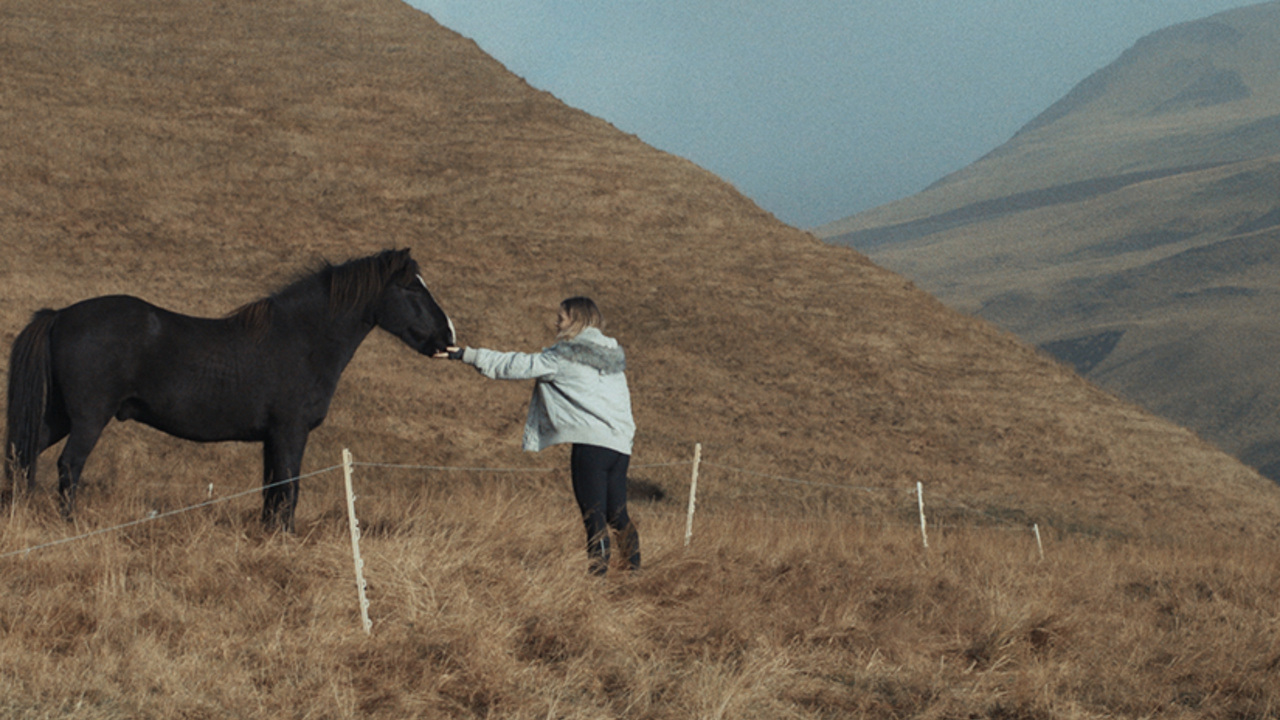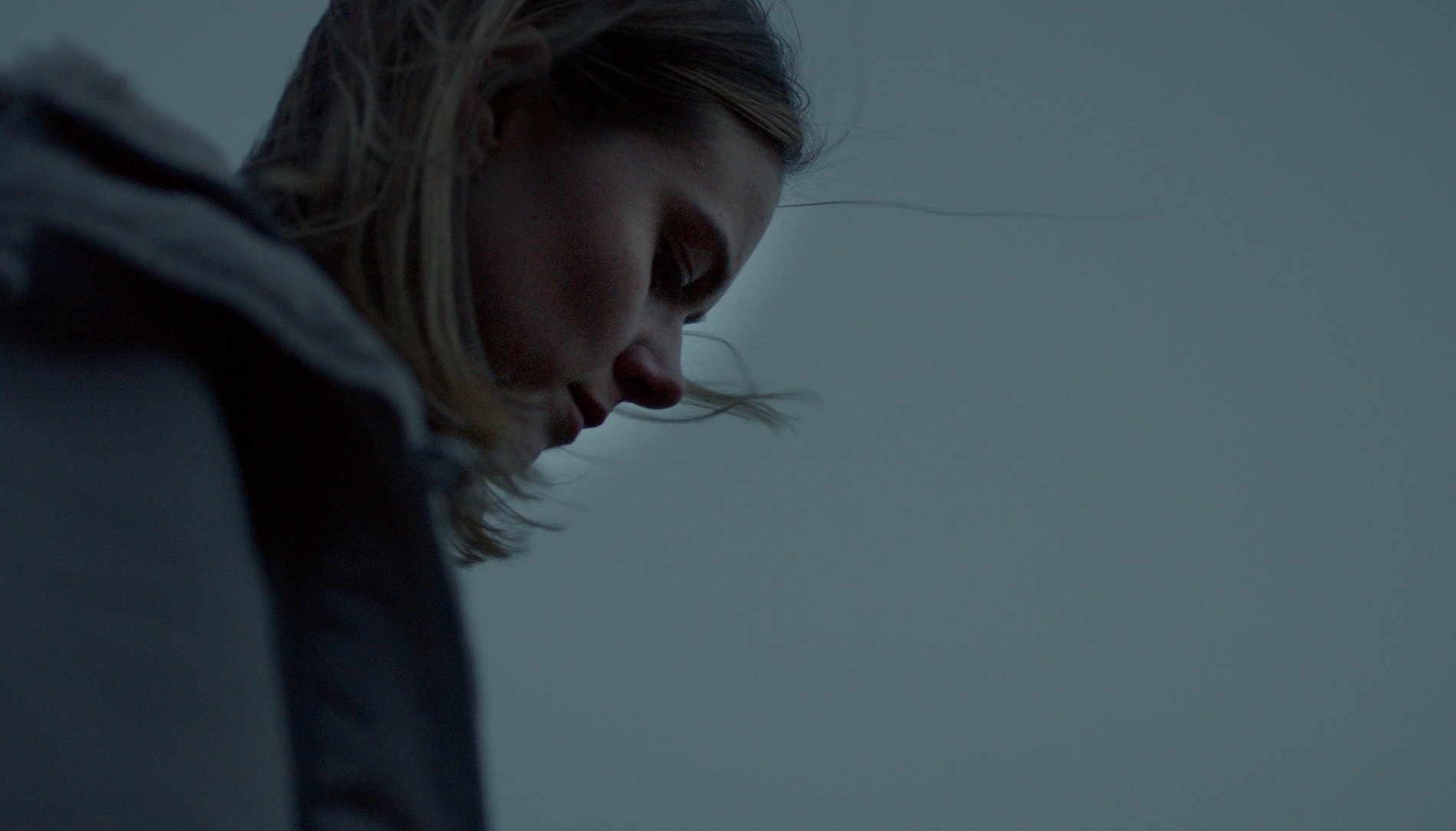
Case Study: Silence of the Fish
Silence of the Fish is one of the films selected for the SHIFT Short Film Competition.
Geplaatst op 24 augustus 2020Hilke Rönnfeldt was born in Northern Germany and has Icelandic-Danish roots. She is a writer/director whose work revolves around life in small communities, loneliness, intimacy and the sea. Essential for her filmmaking is to be real and aim for the heart. She has a strong faith in the poetic capability of the image. Silence of the Fish is about a teenage daughter who has to fight a battle against her mother's depression in the wilderness of the Icelandic Fjords.
"In a way I felt positively isolated, but also remembered how difficult it felt to me to grow up in a small community in the countryside."
Isolation
"The idea for Silence of the Fish started when I had moved back to Iceland into the countryside after having spent some time living a busy city life, studying, working and being surrounded by many people. In a way I felt positively isolated but also remembered how difficult it felt to me, growing up in a small community in the countryside."
The beginning
"I met my producer Anna Sæunn Ólafsdóttir through mutual friends. She also grew up far from the capital in the North of Iceland and we just started bubbling about things and the chemistry was good between us."
"I always wanted to make a film about a mother-daughter relationship. In general I am very fascinated by the dynamics between females, so I started writing the script. I usually start developing a story from images and feelings, not so much from the perspective of a certain plot. I don't write a lot in dialogue, I am quite focused on the unsaid between humans and everything that lies underneath expressions, sometimes words. In order to express that, nature that surrounds me helps a lot. It evokes strong feelings that relate to inner emotions and because of that it find their expression in nature which inspires my storytelling a lot."
"It took some rewriting and I also got mentoring from the Icelandic filmmaker Guðmundur Arnar Guðmundsson, whose work I really admire. His advice was great. There were a lot of different story strands in the script that I wanted to tell but he reminded me of which story is the important one I want to tell and that I would need to find that specific one for this short film and focus on it. Like that I got closer to that story and tried to crystalize it."

Screen Talent Europe
"We started financing and the casting process and Anna and I worked on the scheme that would later become Screen Talent Europe. We had financing from the Filmworkshop in Kiel/Germany, the Filmworkshop Copenhagen and a grant from Erasmus+ in Iceland. For a short film we had quite an ambitious financing plan, which was complicated, but also made it possible to work with a great international crew and also to give us an experience of how co-producing works. I would always do it again even if it takes a bit of time and it means that you can't just go out and shoot."
Shooting in Iceland
"My DoP Nicholas is from Copenhagen and we knew each other through a mutual friend and I saw some of the films he shot and really liked his style. He is a very calm and focused person and fun to work with, so that was a professional and personal match. We sent moodboards back and forth and discussed films we liked and which had something that could fit this project. He arrived a few days before the main shoot in Iceland and we had a short and intense preparation time together, looking at the location (scouted by my producer and myself) and making shot lists."
"We decided to use handheld cameras and natural light as we didn't want to be too dependent on long light set-ups. We used our shot lists more as a kind of guidance and in order to be sure that we would have enough shots to cover the edit that we were planning but we changed quite a lot during the shooting. There were of course some changes we had to make due to the weather that is very unpredictable in Iceland. However, the same weather also made us some really nice gifts that we wanted to react to."
"We had five shooting days which was not a lot, so we planned in less shots in order to cover a scene. Furthermore I also didn't do a lot of different takes as I feel it sucks out the energy - for me at least. In our case that was possible because a lot of scenes are without dialogue. The production was therefore short and intense. We had long days - a usual shooting day in Iceland is 12 hours - but everything went quite well."
"We had a great crew and a good team spirit and that's kind of the most important thing for me when looking for crew, that I can 'feel a good vibe' with a person, that's as important as how good everyone is at his craft. I would never like to work with someone who is a genius but an asshole. That's my advice for a director. Maybe it is too simple and if you work together for the first time it's also hard to realize but it can cast a shadow on a production."

The post-production
"The post-production took place in Denmark where I had moved then. My editor Fanni Liv Engelbrecht and me had a long editing phase together in the editing room. Almost six months due to our jobs and studies, which I rather would do differently next time and have a more condensed process as we always had to spend time to 'get into it again' every time before we could continue working."
"We worked with music cues in editing, which I had received from my composer Herdís Stefansdóttir. However, we ended up having to lock the edit with the music already locked in beforehand because the editing had taken longer than we had planned and Herdís was pregnant and had another project she needed to finish before the birth. This is another thing I would like to do differently next time: To lock the edit and still have the chance to try different things with the music and sound and have a more inclusive process."
"Then our international experience got even more exciting as we couldn't find any available sound designers in Denmark. This is why I reached out to a Finnish friend that I had met at a festival some years ago. In the end, the sound was done in a studio in Helsinki and our sound designers Vili Laitinen and Ville Katajala worked some sound and foley magic a few days before Christmas. It was amazing to hear how to make fish sounds very fishy with a piece of leather cloth."
The last steps
"Finally we finished everything in Northern Germany at the post-production service Cine Complete where I sat together with the grader Andreas Hellmanzik and graded the film in two days, which was very exciting as I hadn't really graded professionally before. Our cinematographer then made the DCP for us and we were ready to go for festivals."
"Anna and I basically worked out a list with festivals that would fit our type of film with their programming. That was quite some work, also regarding the filling out the forms and the sending out of materials each time. Platforms like FilmFreeway and Shortfilmdepot are really great. I would recommend those or even to try finding a good agency that would do the distribution if there is the budget. Otherwise I recommend planning in a lot of time and some money to send the film to festivals. We premiered the film nationally in Iceland at the Reykjavík International. And then we were lucky, the Tallinn Black Nights Film Festival in Estonian accepted to premiere our film in autumn 2019 in their International Short Film Competition. It has continued travelling to some festivals, then COVID happened and our film took a break and now apparently it continues its festival life at the SHIFT Film Festival. In September it also travels to Helsinki where we can hopefully celebrate with our Finnish sound designers!"

Silence of the Fish
Short Film Competition 1
September 11, 18.00-19.30, Online
(c) All visual material is used with the filmmaker's permission.